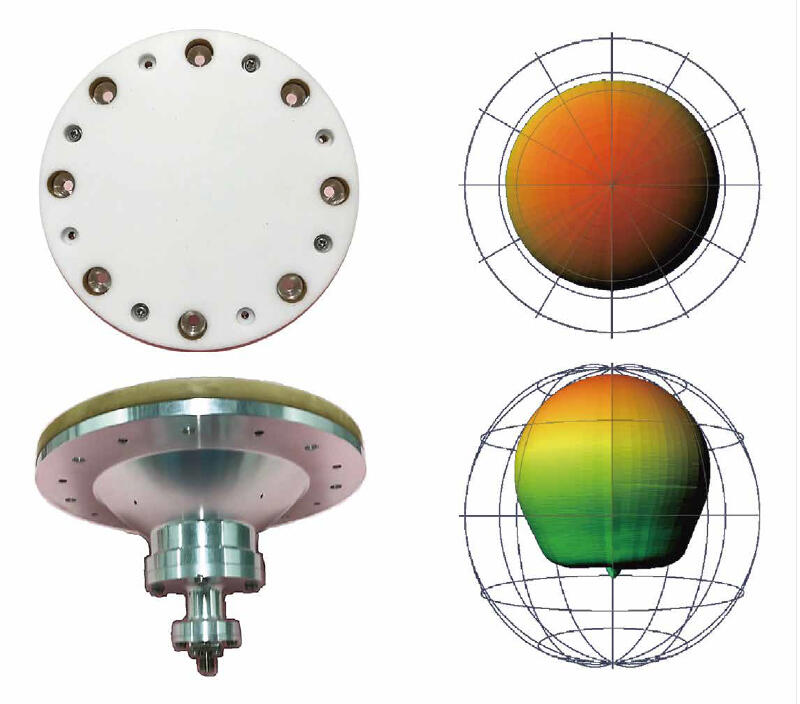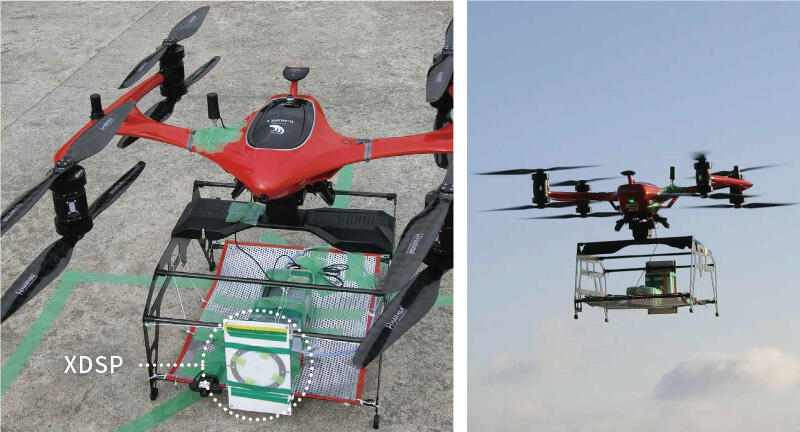Research and Development Directorate
Adaptable to All Sorts of Frequencies
The Small Parabola Antenna with Expectations for an Array of Uses
The Research and Development Directorate has developed the XDSP, a x(cross)-dipole feeding small parabola antenna. The XDSP is the first antenna in the world to have the directional characteristic of being able to transmit and receive radio waves in all directions within the hemisphere. The inventor was SEZAI Toshihiro, Associate Senior Researcher in the Directorate's Research Unit 1. The XDSP was invented in the research of antennas on rockets started in 2016, and patents have been acquired in the US and Japan. Since 2019, SUGIZONO Kohtaroh has been in charge of its development, and in 2020 an XDSP for rocket that withstands fierce flight environment and has broad directional characteristics was achieved.

As SUGIZONO explains: "The aperture of most parabola antennas (from a few meters to a few tens of meters) is larger than the radio wave lengths. This is why it was thought that parabola antennas like the XDSP with apertures (less than 10 cm) of around one wavelength or less were not able to work."
He says that the XDSP will greatly improve communications with rockets.
"In the case that the XDSP is used as the rocket antenna, it will minimize the impact on communications from the antenna location, the rocket shape, the rocket attitude during flight, et cetera. It will also considerably reduce the conditions for flight paths and attitude control. Furthermore, it will be able to simplify communication link analysis and antenna pattern measurement during the development of new rockets."
Since it is expected that by the XDSP the launch capability is improved and the developmental costs are reduced, its equipment on Epsilon S launch vehicle currently developed and other rockets is under consideration.

Furthermore, since the XDSP can be used for all sorts of frequencies, it is possible to use it not only in the space development fields but also on flying objects such as aircraft and drones, in highspeed mobile communications, 5G and Wi-Fi, et cetera. At this moment in time, starting with XDSPs on drones, the development of XDSPs for commercial use is underway.
SUGIZONO says: "Besides the high performance of XDSP, XDSP has the advantage of being equipped inside or on walls or bodies of flying objects. This leads to designing XDSP matched with surroundings. I would like to see the XDSP being used in all sorts of ways."
It is hoped that in the future XDSP will be used in many places both in space and on the ground.
Profile

|
|
|---|
All the images are copyrighted ©JAXA unless otherwise noticed.
- Home>
- Global Activity>
- Public Relations>
- JAXA’s>
- JAXA's No.86>
- The Small Parabola Antenna with Expectations for an Array of Uses